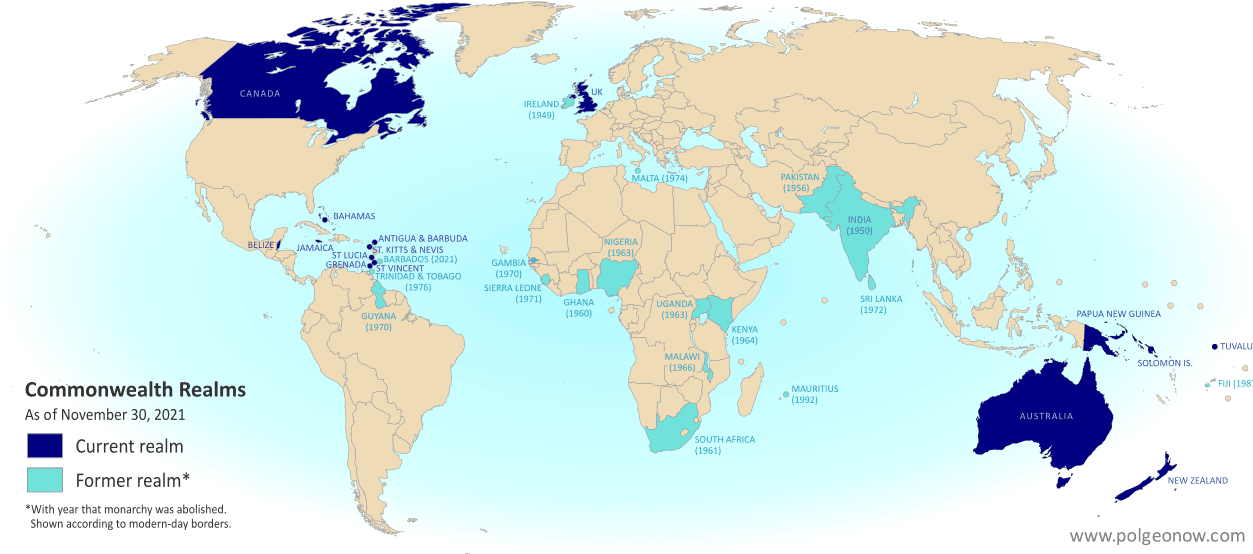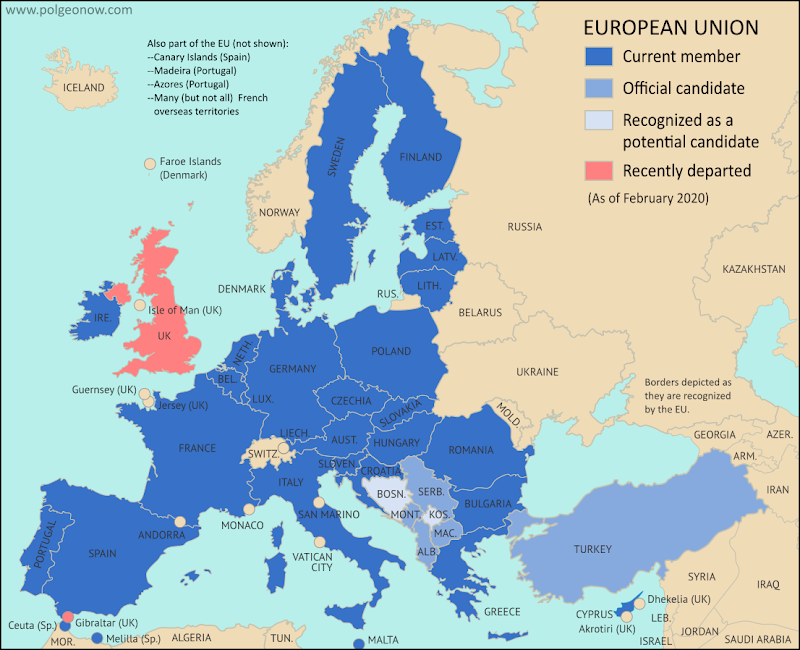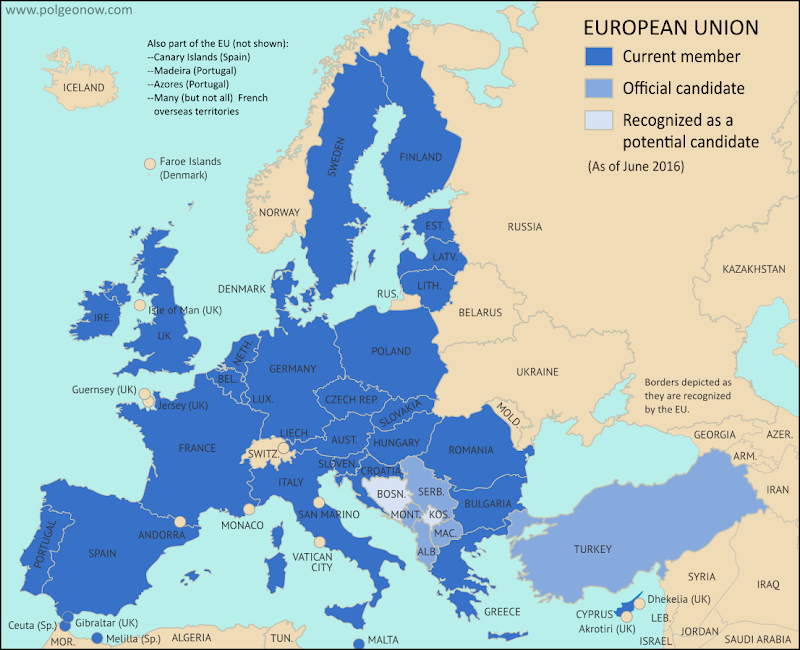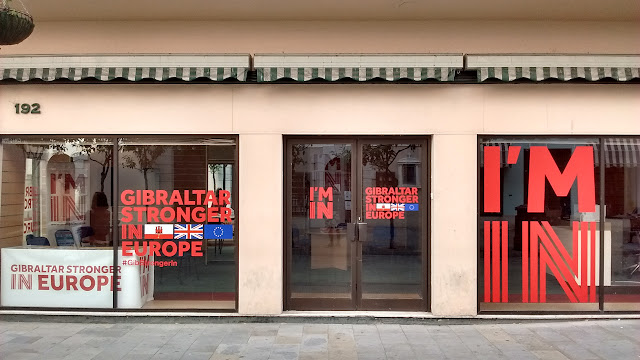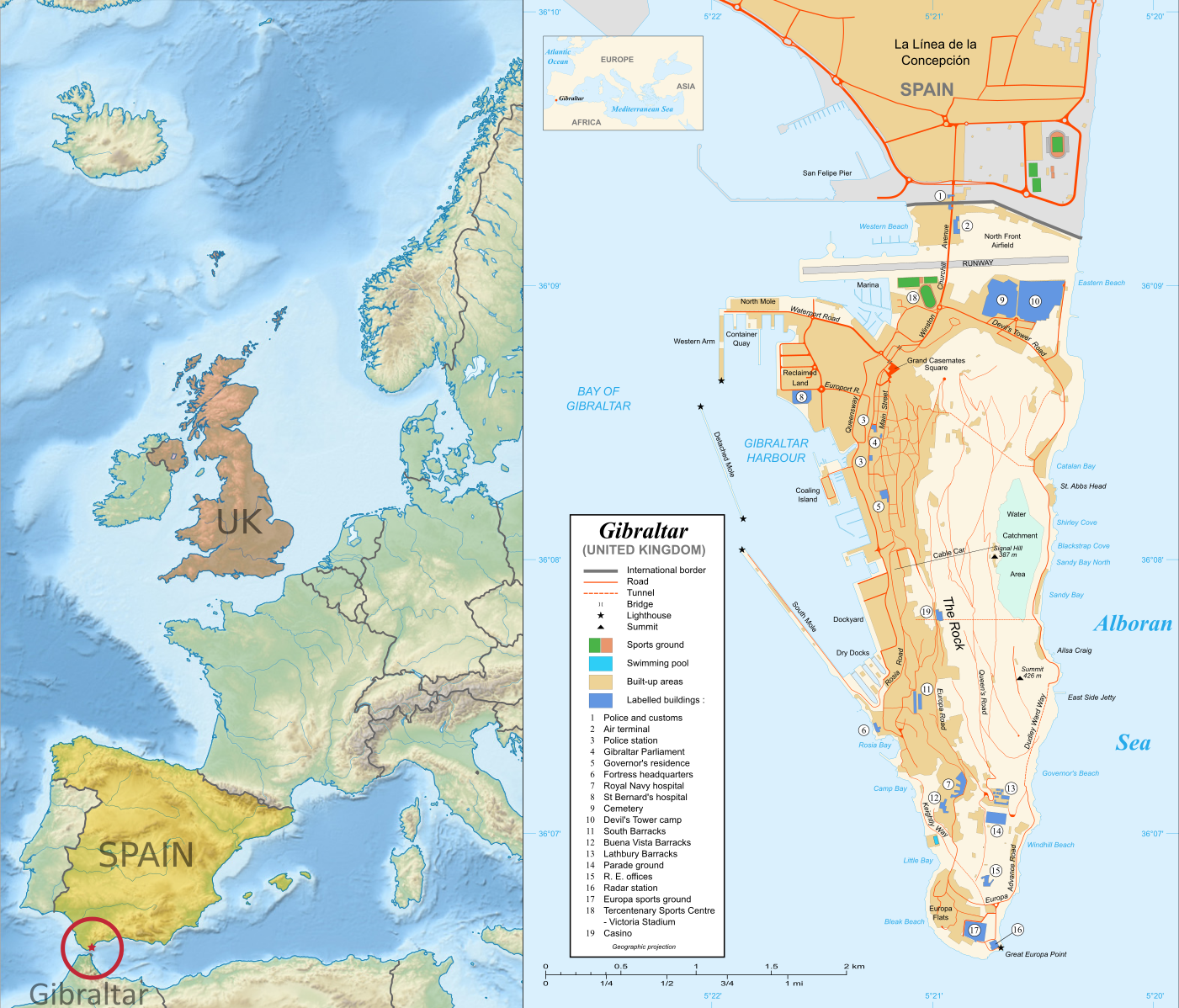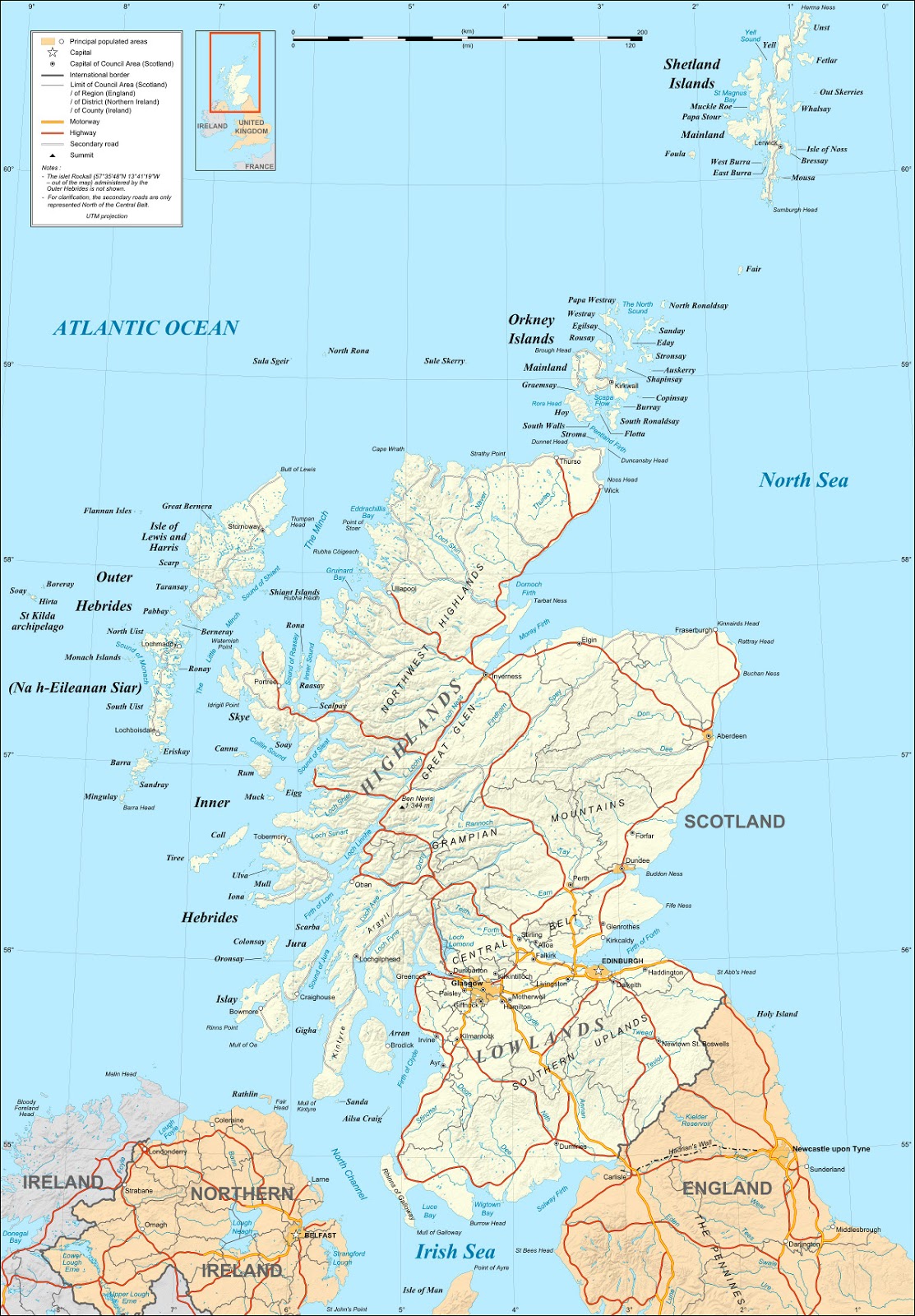Did you know the new King Charles III isn't just the King of England and the larger UK, but of 14 other independent countries? If that statement just raises more questions for you, read on for all the answers...
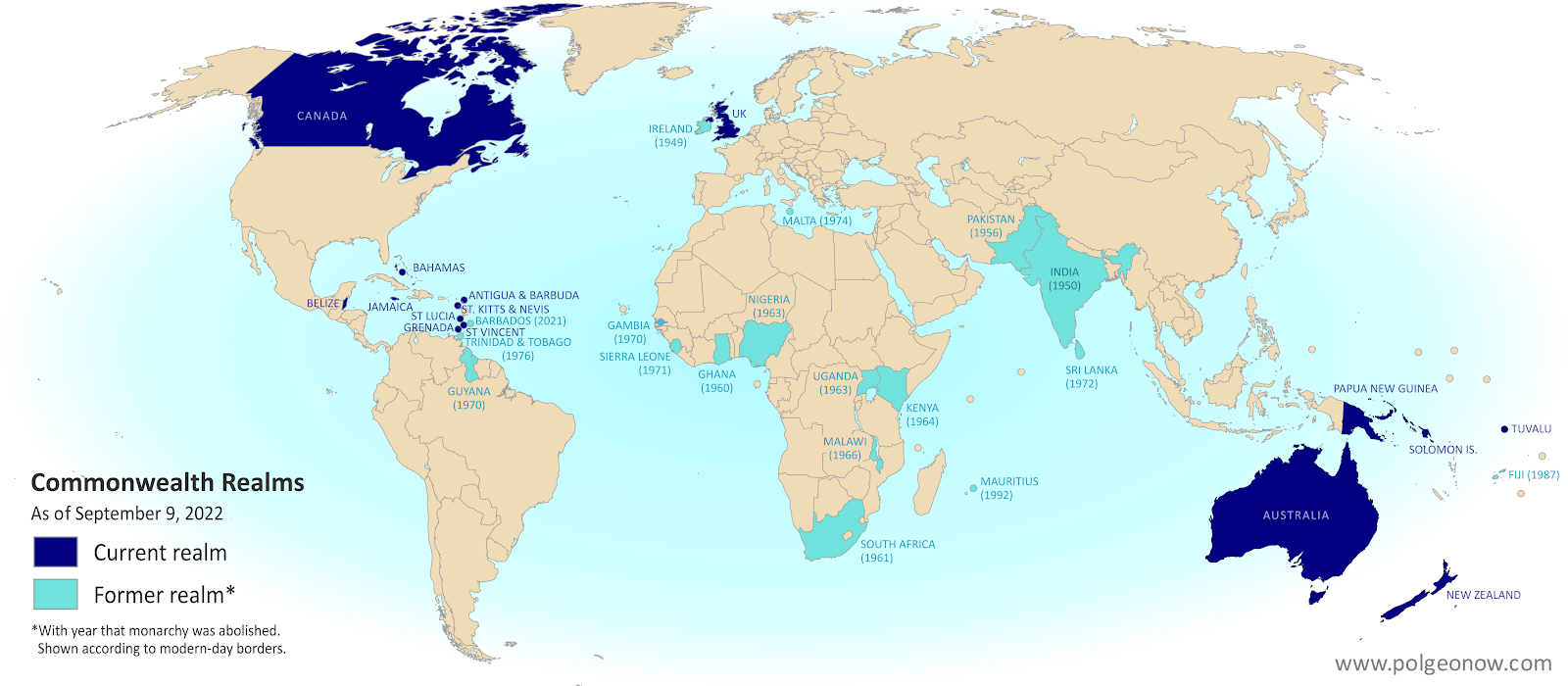 |
| Map of the Commonwealth realms (independent countries that share the monarchy with Britain). Click to enlarge. Contact us for permission to use this map. |
Which countries does King Charles reign over?
You might be surprised to learn that King Charles III is the official king of 15 different independent countries. Those countries are together known as the "Commonwealth realms" - a smaller subset of the Commonwealth of Nations, which also includes many kingless republics. Every one of the 15 Commonwealth realms is considered a fully-fledged independent country and a member of the UN, despite sharing the same monarch.

